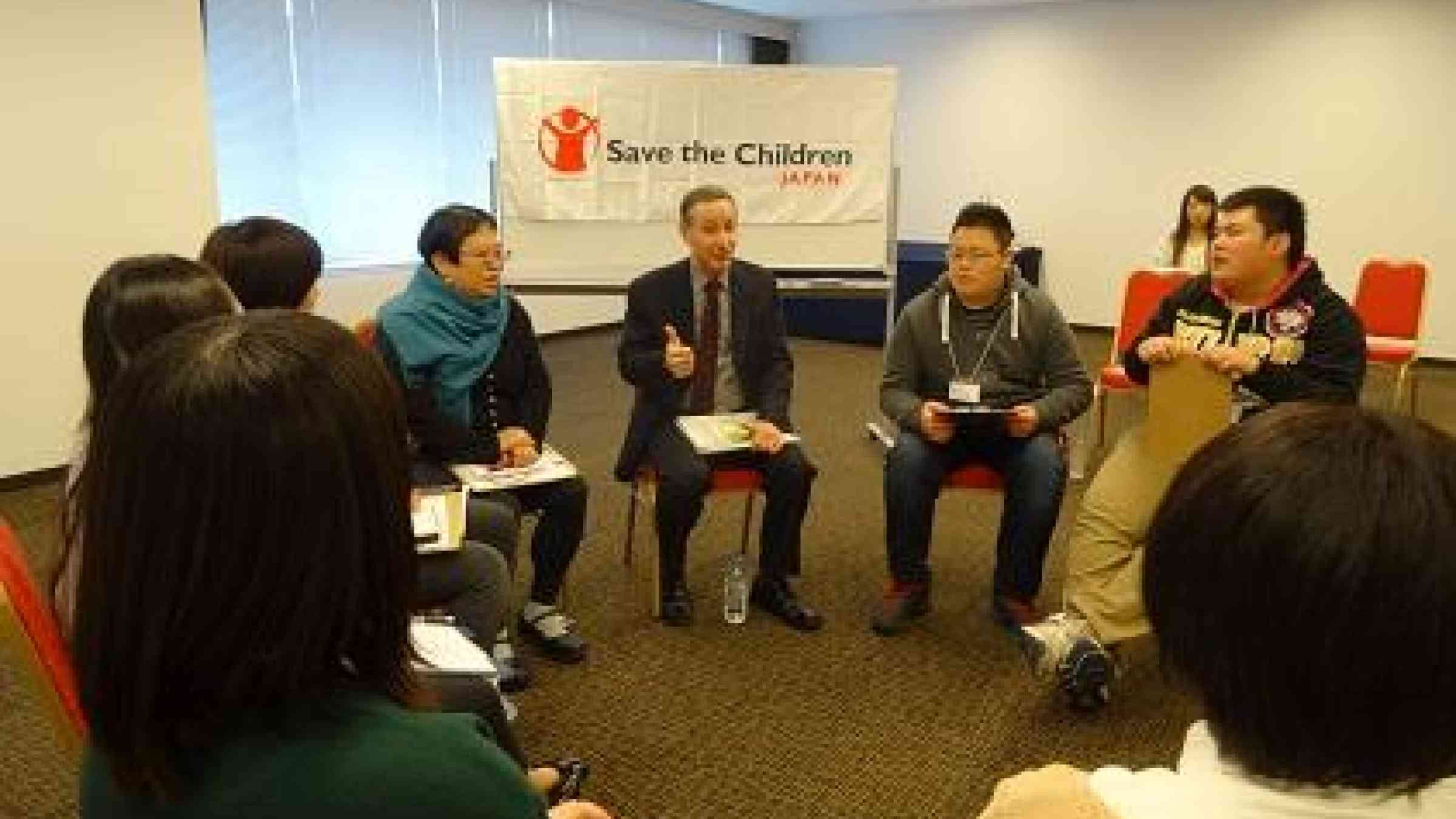
SENDAI, Japan, 14 March 2016 - The head of UNISDR, Mr. Robert Glasser, used the occasion of his first visit to Sendai, Japan, to outline the key innovations in the Sendai Framework for Disaster Risk Reduction, an international agreement which was adopted in the city on March 18, 2015.
Speaking to a Symposium at the weekend, Mr. Glasser said that the Sendai Framework extended disaster risk management from a focus on natural hazards to man-made hazards and associated environmental, technological and biological hazards.
“Perhaps the greatest contribution of the Third World Conference on Disaster Risk Reduction, which took place here last year, is a shift in focus from disaster management to disaster risk management.
“If we are to get ahead of the curve of humanitarian needs, then we have to make progress in addressing the underlying drivers of disaster risk , including poverty which is closely linked to exposure to hazards, climate change, unplanned urbanization, environmental degradation, and shortcomings in risk governance. The Sendai Framework should motivate an all-of-society approach to reducing disaster risk and reducing disaster losses.”
He also updated the Symposium on progress being made in developing indicators for measuring progress on achieving the seven targets outlined in the Sendai Framework, which include substantial reductions in mortality, numbers of people affected, economic losses and damage to critical infrastructure.
The Sendai Framework also seeks an increase in access to multi-hazard early warning systems; an increased number of countries with national and local disaster risk reduction strategies and enhanced international cooperation.
Earlier, Mr. Glasser participated in the solemn Memorial Service for the 19,000 people who lost their lives in the Great East Japan Earthquake and Tsunami. He stressed the importance of keeping alive the memory of such catastrophes. He also paid a courtesy visit to Mr. Toshihiro Nikai, Chairman, General Council of the Liberal Democratic Party, who proposed the idea of an annual World Tsunami Awareness Day, the first of which will take place on 5 November.
While in Sendai, Mr. Glasser visited the seaside village of Arahama which was hit by a 10 metre tidal wave following the March 11 earthquake. The residents evacuated to the Arahama Elementary School, which was the only tall building in the area and were rescued the following day by helicopter.
“My visit to Sendai has highlighted for me the innovative ways communities can build back better following a disaster including in this case multi-layered measures along its coastline to protect communities from future tsunamis”, Mr. Glasser said after visiting the Arahama Elementary School. Sendai City is considering preserving the school as a memorial to the disaster victims.
In cooperation with Save the Children Japan, eight children from different cities in Tohoku Region had a dialogue with Mr. Glasser and shared their stories and recommendations.
A boy who is 12 year-old and 6th grade in an elementary school shared his suggestion that children should have more opportunity to learn about disasters, to share their experiences of disasters, and to prepare for future disasters.
A girl from Iwaki city shared some controversial discussion at her community about building a seawall which would provide protection but at the cost of blocking out the view of the ocean.
At the end of the dialogue, Mr. Glasser said: “Community plans should be locally designed. Children need someone to talk to and listen to them as well as occasions to communicate as children have ideas, energy, and solutions”.
He also met with the Mayor of Sendai, Ms. Emiko Okuyama, who highlighted the importance of actual implementation of the Sendai Framework, turning the words into action.
Mr. Glasser's visit to Sendai was preceded by a series of high level meetings with the Government of Japan, including the Minister for Disaster Management, Minister for Land, Infrastructure, Transport, and Tourism, and Vice Minister for Foreign Affairs. He also met with representatives of the private sector, civil society and science groups.